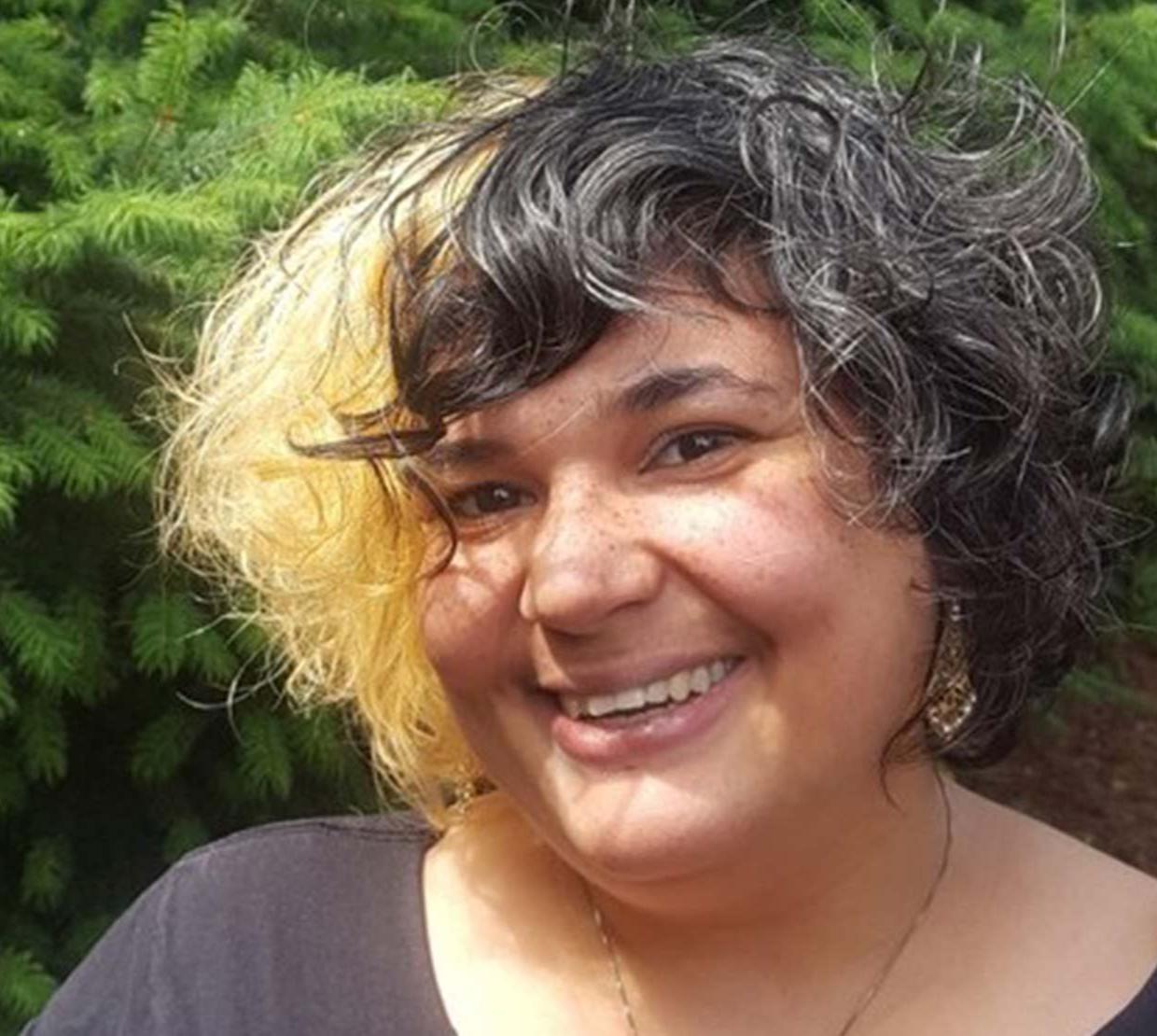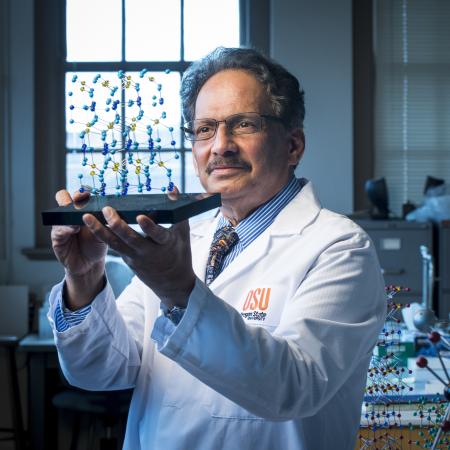Seeing a nuclear reactor was pretty cool, Cynthia Cedeño has to admit.
“I knew there was a nuclear reactor on campus. I didn’t know where, or what they were doing or why, but I got to learn about all of that; I got to see it all.”
Chemistry majors are required to take a series of lab courses designed to get them ready for a career as a scientist and as a chemist. “You’re doing pretty advanced stuff,” she says. “In one of those lab courses, we got to go to the radiation center, and actually irradiate samples and do experiments.”
Cedeño is a fifth year chemistry major with a minor in math and, despite being impressed with the nuclear reactor, will not pursue nuclear chemistry.
But this is why she loves Oregon State University: Options and opportunity.
Option 1: Biological chemistry
At the outset of college, Cedeño was certain of two things: She would study chemistry, and she planned to attend grad school. But she needed to determine what kind of chemistry.
“I knew I wanted to attend an R1 school,” Cedeño says. “R1 schools” in the Carnegie Classification of Institutions of Higher Education are the schools with the highest level of research activity in the country.
“It was one of the things that drew me to OSU,” she says. “There was a wide range of [chemistry] going on, from physical to analytical, to the more biological side. I thought, ‘Here is a place where I can get research experiences, and narrow where I want to focus my grad studies.’”
When Cedeño transferred as a second year chemistry major from Portland Community College, she focused on the biological side of chemistry and assisted a grad student working on crayfish studies. “I got started with running water samples, checking for nitrogen levels,” she says. This led to an 18-day research cruise in the Pacific Ocean, taking water samples and “deploying different cool, space-looking technology to collect data about the temperature and the depth.”
A great experience—but one that pointed Cedeño in a different direction: organic chemistry. Getting experience in an organic lab would, she found, would take some work and initiative.
Option 2: Organic chemistry
A class with professor Paul Blakemore in Cedeño’s third year studies caught her attention. “During one of the labs, we made what’s called an organometallic reagent,” Cedeño says. “It’s really fun, and it’s really cool, and a little bit dangerous.” Meaning the chemicals react vigorously and potentially explode. She found she liked it—very much—and asked Blakemore if she could join his research group. Though he did not have room for her at the time, she followed up with an email a week later.
His rejection was kind: “Sorry; I don’t have any space. But if anything comes up, I’ll let you know.”
About a week later, he emailed Cedeño again: Was she still interested?
Sometimes, Cedeño says, you have step out to meet an opportunity. “Especially at a research institution, all the other chemistry majors are trying to get into a lab as well, so it’s very competitive. But it goes back to taking that initial step. If you want it, you’ve got to reach for it and grab it; because it isn’t just going to come to you otherwise.”
Cedeño has been in Blakemore’s group since April 2018, studying the spatial arrangements of a certain azaBINOL type molecule and how those arrangements affect the properties of the molecule. A collaborating research group at OSU discovered that this molecule exhibited anti-HIV activity. “If a molecule has a specific biological activity (such as HIV inhibition), it is extremely important to understand the stability of the molecule,” Cedeño says. By looking at the spatial arrangements, Cedeño is determining how stable the molecule is, and how long it can last. “If there is ever any hope of making a medicine from a molecule, the molecule has to have a feasible lifetime—it has to last.”
The use of a molecule in one arrangement can be beneficial, while another spatial arrangement can lead to tragedy. “For example, the medicine ‘thalidomide’ was given to pregnant women as an anti-nausea medication in the 1960s,” she says. “One spatial arrangement actually quells nausea. However, the other spatial arrangement caused birth defects and led to the death of many women during childbirth. It is an extreme example, but it highlights the significance of configurational stability studies.”
Not the traditional student
Originally from Tacoma, Wash., Cedeño loved science as a kid. “But the teenage years happened, and mine were a little bit rocky,” she says. She dropped out of high school and, several years later, moved to Portland.
“I was doing my thing there for a little while, and then realized I missed that feeling of learning,” she says. “I missed being in school. I didn’t miss high school, that’s for sure! But I missed being challenged in that way.”
This is where Cedeño began learning about taking that initial step. She earned her GED, then started transfer degree courses at Portland Community College. While there, she was awarded a research experience in an organic lab at Portland State University and the NASA National Space Grant.
“It was just terrible circumstances that led me to drop out [of high school],” Cedeño says. “Sometimes it’s too much to bear; the world is just too much to bear. But there is hope. Just because something isn’t working out right now doesn’t mean it won’t work out later. It’s taken a lot for me to get here, and it’s taken a lot of work, and it’s been one of the hardest things I’ve ever had to do in my life, but…nothing in my life was going to change if I didn’t do this for myself.”
Cedeño is a minority in her field of study on multiple levels: female, older (she’s 31), and a woman of color, of Puerto Rican-Dominican descent. “You look around and you barely see any faces like yours. That’s intimidating, and it’s really hard to adjust to,” she says.
Cultural centers on campus—the Hattie Redmond Women and Gender Center and Centro Cultural César Chávez, among others—helped Cedeño navigate in her new world, met basic needs, and provided a place to just be, whether to study or hang out with friends, where Cedeño was more aware of the sameness rather than the difference.
Grad experience as an undergrad
Since fall term of 2019, Cedeño has been a teaching assistant (TA)—a role most often given to graduate students—for physical chemistry, a 400-level class. As a TA, she prepares quizzes, develops short lectures, writes homework keys, grades and tutors four to six hours per week. She also helps troubleshoot and structure the course and course materials—particularly during the COVID-19 shutdown, when classes moved online.
“This experience has been a great window into what to expect in graduate school,” Cedeño says. “Becoming a TA has forced me to manage my time wisely. I have been especially lucky to hold an undergraduate research assistant position [with Blakemore] during this time. This means I have been doing my TA work and my undergraduate research project all while taking classes of my own.”
While the stress of managing these tasks has been overwhelming at times, Cedeño was able to adjust her course load—lengthening her undergraduate studies one extra year—to take advantage of the opportunities and still remain healthy, sane, and even have time for fun.
“I am so thankful for this experience,” she says. “I know what to expect as a graduate student, and what’s more, I have proven to myself that I am capable and that I have what it takes to be a successful graduate student.”
Finding a path and a home
This big city girl wasn’t sure she’d like Corvallis. “Corvallis is by far the smallest place I’ve ever lived,” she says. She arrived for her tour on a misty Oregon morning. “The plants were dewy; it was surreal. Just a big, open campus. I could totally see myself here.”
She fell in love with it.
Now at the end of her undergraduate studies, she intends to find a job at one of many science-oriented companies in town; take a year or two to regroup, then begin graduate studies. And if COVID-19 alters her job opportunities, and she will apply for grad school at OSU.
“I’ve become so much more confident that I can make it in grad school, and that this is what I want to do,” she says. “There is really awesome chemistry going on here, that I know I would love to be part of. Even though there’s so much chemistry that’s been known for a hundred-plus years, there’s still a lot to learn.”



